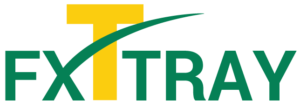The digital revolution has changed nearly every aspect of our lives — from communication to shopping and the workplace. Perhaps one of the most influential changes has happened in the financial space, specifically investing. The arrival of internet investment platforms has provided regular people with instruments, markets, and chances that were previously only Online investment platforms accessible to the privileged.
In this blog, we will deconstruct what online investment platforms are, how they operate, what draws people to them, and how you can get started on your own path to financial growth.
What Is an Online Investment Platform?
At its essence, an online investment platform is a website or digital service that enables people to invest in financial products like stocks, bonds, mutual funds, ETFs (Exchange-Traded Funds), cryptocurrencies, and others. Such platforms act as middlemen between individual investors and financial markets, providing access, information, and trading facilities — sometimes straight from your laptop or smartphone.
Those days are over when you had to have a personal broker or a financial advisor to begin investing. Now, all you require is internet connectivity, a verified account, and some capital to start creating your financial portfolio.
Why Online Investment Platforms Are Becoming Popular
The increasing popularity of online investment platforms can be linked to some key benefits:
1. Accessibility
One of the greatest draws is that investing is no longer exclusive to the rich. These sites enable individuals from all walks of life to begin small — sometimes with just $10 — and build up their portfolios over time.
2. Convenience
Having the ability to invest, monitor, and control your portfolio at any time, from anywhere, is revolutionary. With simple mobile apps and easy-to-use dashboards, it’s all at your fingertips.
3. Variety of Assets
Most websites provide exposure to a broad portfolio of assets. Stocks, crypto, real estate investment trusts (REITs), or sustainable funds might be what you have an interest in, and the choices are varied and ever-increasing.
4. Reduced Fees
Historical investment strategies tend to bring elevated fees, commissions, and minimum account requirements. Several internet sites run with low or even zero-commission models, making it more economical to invest.
5. Learning Materials
One of the top features of contemporary platforms is that they provide learning tools — blogs and videos to simulations and webinars. Such tools equip the users with the ability to learn and develop according to their convenience.
What to Look for in an Online Investment Platform
It is such an overwhelming array of platforms that finding the appropriate platform can prove confusing. These are some important parameters to be examined:
1. Security and Regulation
Always choose a platform that is regulated by a recognized financial authority. Look for features like two-factor authentication, encryption, and strong privacy policies to ensure your money and data are safe.
2. User Interface and Experience
A well-designed, intuitive interface can make a big difference — especially if you’re a beginner. The platform should be easy to navigate, with clear visuals, tools, and performance tracking.
3. Asset Availability
Ensure the platform has the kind of investments you want. If you wish to invest in both traditional and alternative assets, find one that accommodates that flexibility.
4. Fees and Charges
Some platforms have commission-free trading but charge withdrawal, inactivity, or premium fees. Always read the fine print and know what you’re paying for.
5. Customer Support
Responsive and well-informed customer service can be a lifesaver, particularly for financial transactions. Live chat, phone support, or a strong FAQ section can go a long way in enhancing your experience.
Getting Started: A Beginner’s Roadmap
Being new to investing, it can be scary to start. But it doesn’t have to be. Here’s a straightforward step-by-step guide to assist you in getting started:
Set Clear Financial Goals
Specify why you’re investing — whether for retirement, house, education, or overall wealth creation.
Select the Right Platform
Depending on your objectives, find and choose a platform that fits your needs, budget, and risk appetite.
Open an Account
Register, perform KYC (Know Your Customer) verification, and deposit money into your account.
Begin Small and Learn
Start with minimal investment as you navigate how the site operates. Take advantage of existing resources to expand your understanding.
Diversify Your Portfolio
Don’t risk everything on a single asset. Diversify your investments over various assets for risk management.
Monitor and Adjust
Monitor how your portfolio performs and adjust based on market factors and your changing objectives.
Risks to Consider
As thrilling and lucrative as internet investing can be, it’s not risk-free:
Market Volatility: Prices fluctuate wildly, particularly in volatile markets such as crypto and tech stocks.
Scams and Unregulated Platforms: Watch out for deals that seem too good to be true.
Overtrading: With easy access, the urge to trade too much can damage your long-term profits.
Lack of Diversification: Concentrating all your funds in a single asset or sector increases your exposure to risk.
The key is to invest wisely, stay informed, and always have a strategy in place.
The Future of Investing Is Digital
Online investment platforms are constantly changing, adding sophisticated features such as AI-based advice, automated investing (robo-advisors), and social investing (copying other investors). These technologies are making investing more accessible, transparent, and easy to use than ever.
As the world of finance continues to become more digital, these platforms will increasingly dominate how individuals and institutions invest their wealth.
Conclusion:-
Online investment platforms have democratized access to financial growth. With the right tools, knowledge, and mindset, anyone can start investing — regardless of experience or background. The journey to financial independence is no longer gated; it’s open, digital, and accessible.
`



Leave A Comment